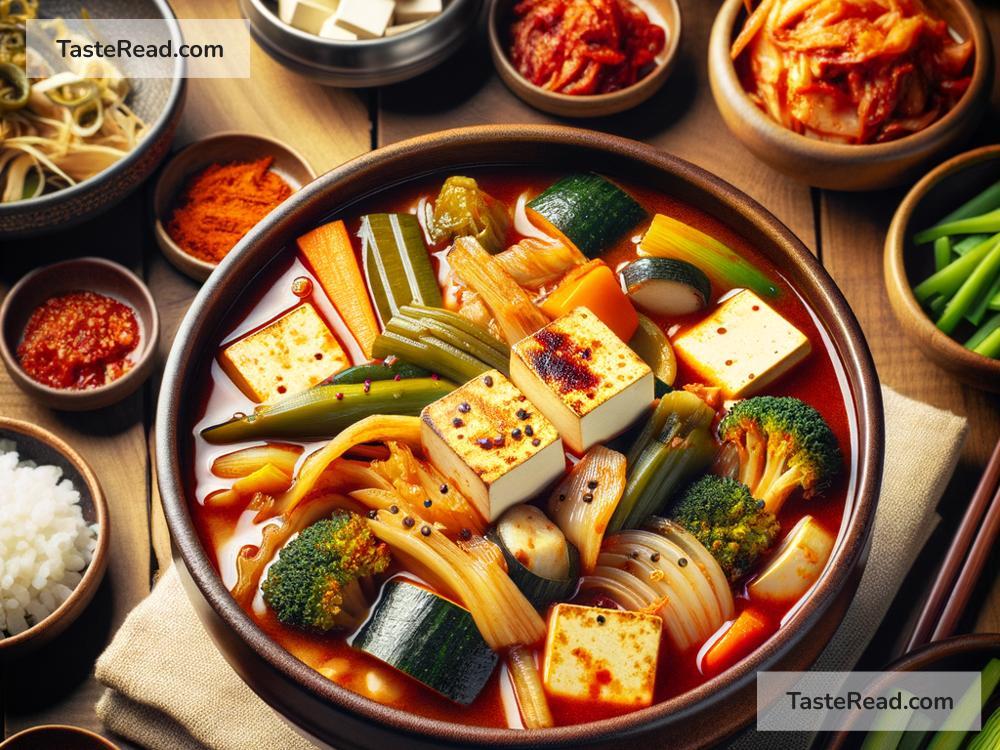Title: Journey into the Heart of Korea: The Tale of Kimchi Jjigae
The bustling streets of South Korea are not just famous for their neon lights and high-tech wonders. They are also the cradle of an incredibly rich culinary heritage, at the heart of which lies the humble yet captivating dish known as Kimchi Jjigae. This traditional stew, deeply loved and widely consumed throughout the country, tells a story of culture, history, and the warm embrace of Korean hospitality. Dive in with us as we explore the enchanting world of Kimchi Jjigae, a dish that goes beyond mere flavors to represent the soul of Korean cuisine.
Kimchi Jjigae, at its core, is a simple stew made with kimchi, tofu, pork (or sometimes tuna), scallions, and various seasonings. Despite its straightforward ingredients, the magic of Kimchi Jjigae lies in its preparation and the complex layers of flavor that result. This dish embodies the Korean principle of not wasting food—kimchi that has become too sour to be eaten fresh finds new life in this hearty stew, exemplifying sustainability practices long before they became a global trend.
The tale of Kimchi Jjigae dates back centuries, when preserving vegetables through fermentation was not just a culinary technique but a necessity for survival. In a land marked by harsh winters, the Korean people turned to fermentation to ensure a supply of vegetables throughout the year. Kimchi, the result of this ingenuity, became a staple, and it wasn’t long before it made its way into various dishes, including the beloved jjigae (stew).
Through the years, Kimchi Jjigae has become more than just a dish—it’s a comfort food that evokes a sense of home and warmth. It is commonly enjoyed at home with family, in restaurants as a central dish, or even late at night as a soul-satisfying snack. Its versatility and deeply satisfying flavors have made it a favorite among Koreans of all ages.
The process of making Kimchi Jjigae is as heartwarming as the dish itself. It starts with the preparation of kimchi, which involves salting napa cabbage and fermenting it with a delicious mix of chili pepper, garlic, ginger, and other ingredients. As the kimchi ferments, it develops the sour flavor that is key to the stew’s unique taste. When it’s time to prepare the jjigae, the kimchi is sautéed with pork fat, creating a rich base. Water, tofu, and additional seasonings are then added, and the stew is simmered until it reaches a perfect harmony of spicy, sour, and savory notes.
Eating Kimchi Jjigae is a communal affair, often served in a single, large pot in the center of the table. Friends and family gather around, each scooping servings into their individual bowls, sharing not just a meal, but also stories, laughter, and life. This communal aspect of Kimchi Jjigae echoes the core Korean value of togetherness and community.
Beyond its cultural significance, Kimchi Jjigae is celebrated for its health benefits. Kimchi is rich in probiotics, vitamins, and minerals, while the stew’s spicy broth is known to aid digestion and boost metabolism. It’s no wonder that this dish is a staple in the Korean diet, enjoyed not only for its taste but also for its nourishing properties.
In recent years, the global fascination with Korean culture, known as the “Hallyu Wave,” has introduced Kimchi Jjigae to a wider audience. From bustling cities in Asia to cozy eateries in European towns and lively food trucks in America, Kimchi Jjigae has found a home in the hearts of international food lovers. Its growing popularity is a testament to the universal appeal of simple, heartwarming dishes that bring people together.
In conclusion, Kimchi Jjigae is more than just a stew; it’s a vibrant narrative of Korean tradition, innovation, and the communal spirit of dining. Whether you’re tucking into a bowl in a traditional Korean home, a modern Seoul restaurant, or your own kitchen halfway across the world, Kimchi Jjigae offers a delicious taste of Korea’s culinary soul. It reminds us that food is not just sustenance but also a story of history, culture, and human connection, waiting to be shared and savored. So, the next time you dive into a steaming pot of Kimchi Jjigae, remember, you’re not just enjoying a dish—you’re partaking in a rich and flavorful legacy that has warmed hearts and homes for generations.


